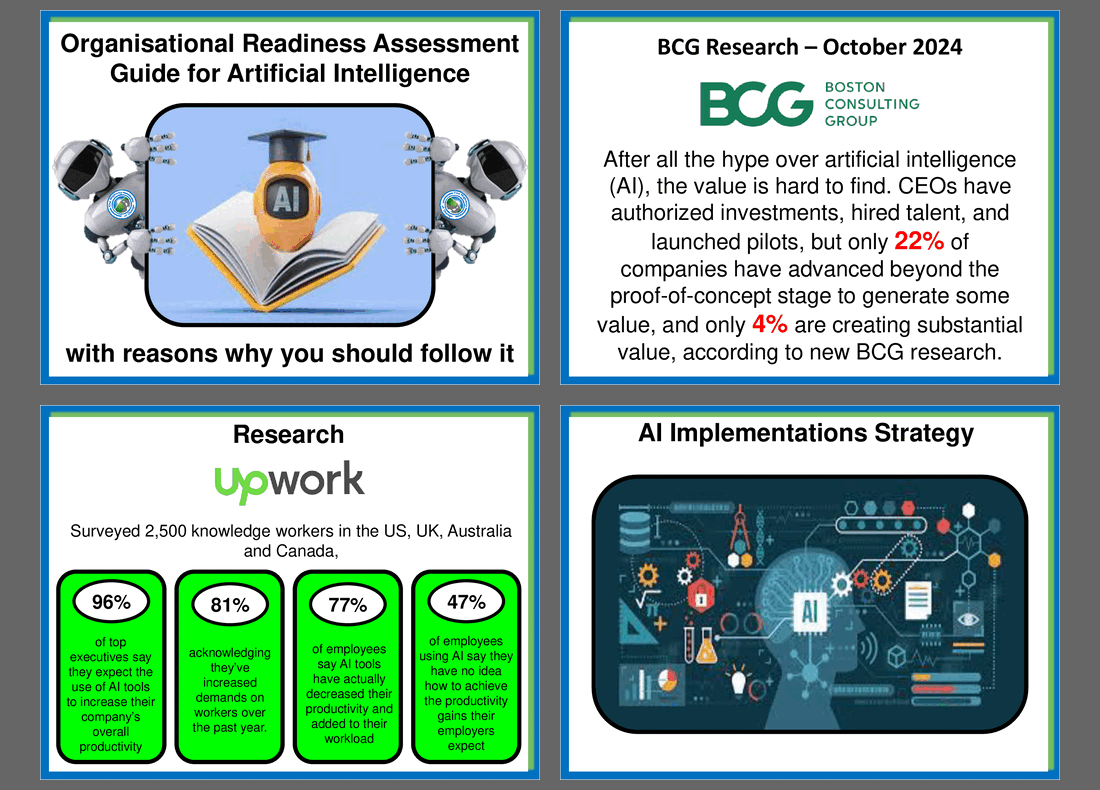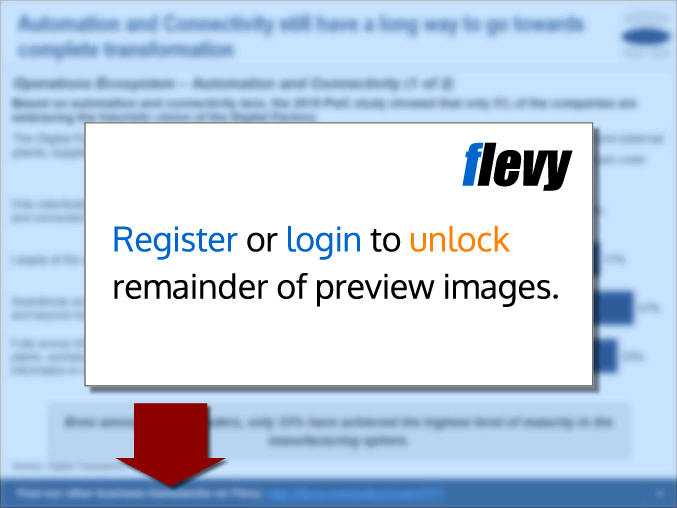Organisation Readiness Assessment Guide for AI Implementation (PowerPoint PPT Slide Deck)
PowerPoint (PPT) 19 Slides
BENEFITS OF THIS POWERPOINT DOCUMENT
- Provides a step-by-step guide for assessing organisational readiness for AI implementation
- Provides global statistics related to AI take-up
ARTIFICIAL INTELLIGENCE PPT DESCRIPTION
AI can automate mundane tasks in seconds that once took your employees hours. Yet leaders are falling into the seductive trap of over-automation, which can lead to lapses in human judgment and an alarming inability to intervene when AI systems falter. In the race to harness AI for personal productivity, leaders should not lose sight of the bigger picture. The allure of individual gains can lead to a dangerous scenario where the collective good is sacrificed for isolated productivity gains.
When employees are handed a tool without understanding its purpose stakeholders may view it with suspicion or even fear. If they are forced to use AI without understanding how it works or how it benefits them, they may resist or merely pretend to use it. I believe the answer to this is to undertake an assessment of the organisation to identify which areas can benefit most from an AI implementation and which areas cannot before making any decision.
Got a question about the product? Email us at support@flevy.com or ask the author directly by using the "Ask the Author a Question" form. If you cannot view the preview above this document description, go here to view the large preview instead.
Source: Best Practices in Artificial Intelligence, Change Readiness PowerPoint Slides: Organisation Readiness Assessment Guide for AI Implementation PowerPoint (PPT) Presentation Slide Deck, The Highway of Change









